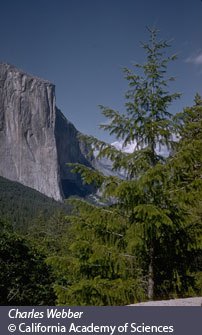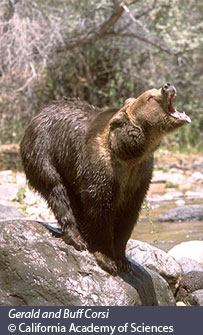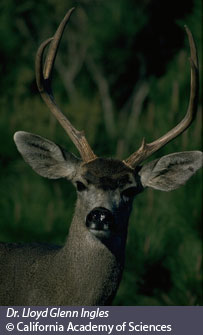|
Location | Weather | Plants | Animals | People | Links
LOCATION: Taiga, also known as coniferous or boreal
forest, is the largest terrestrial biome on earth. It extends in a broad band across North
America, Europe, and Asia to the southern border of the arctic tundra. It is also found
at cool, high elevations in the more temperate latitudes, for example, in much of the mountainous
western region of North America. Much of the taiga in North America was once covered with
glaciers. As the glaciers receded, cuts and depressions were left in the landscape that
have since filled with rain creating lakes and bogs.
 WEATHER: Long, cold winters, and short, mild, wet summers are typical of this region. In the winter,
chilly winds from the arctic cause bitterly cold weather in the taiga. The length of day
also varies with the seasons. Winter days are short, while summer days are
long because of the tilt of the earth on its axis. Fire is not uncommon in the taiga during
the summer. Fires may seem destructive, but they actually help this biome by removing old
sick trees, making room for new growth. Precipitation is relatively high in the taiga and
falls as snow during the winter and rain during the summer. The total yearly precipitation in
the taiga biome is 10 - 30 inches (25 - 75 cm). WEATHER: Long, cold winters, and short, mild, wet summers are typical of this region. In the winter,
chilly winds from the arctic cause bitterly cold weather in the taiga. The length of day
also varies with the seasons. Winter days are short, while summer days are
long because of the tilt of the earth on its axis. Fire is not uncommon in the taiga during
the summer. Fires may seem destructive, but they actually help this biome by removing old
sick trees, making room for new growth. Precipitation is relatively high in the taiga and
falls as snow during the winter and rain during the summer. The total yearly precipitation in
the taiga biome is 10 - 30 inches (25 - 75 cm).
PLANTS: Compared to other biomes, the taiga has less
diversity in plant life. The most common type of tree found in the taiga is the conifer, or cone-bearing tree.
Conifers, also known as evergreens, include pines, spruces and firs. There may also occasionally be deciduous species present, such as oak, birch,
willow, or alder, in a particularly wet or disturbed area. The soil in the taiga is thin,
acidic and not very nutrient rich. It also is rocky. Due to these factors, plants in the
taiga have different adaptations than the plants we find around Santa Barbara.
The< name, evergreen, describes an important
adaptation of conifers. Just like Kermit, they are always green! Because they don't drop their leaves
in the winter, they don't have to regrow them in the spring. This is good for trees in a
tough environment because growing new leaves takes a lot of energy. Another adaptation of
conifers to live in the taiga has to do with their needles. Although the taiga has moderately
high precipitation, the frozen winter ground makes it difficult for trees to get water.
Having thin needles with a waxy coating limits water loss of the conifer through transpiration.
The dark color of the pine needles is also important. What happens when you where a dark
T-shirt on a sunny day? You get hot, right? This is because your dark shirt is absorbing
energy from the sun. Well, the dark needles do the same thing for the evergreen. They help
the tree absorb the maximum amount of energy from the sun for photosynthesis. Conifers also
have that pointy shape for a good reason. The winter snow slides right off of their branches.
Without this shape the heavy snow might break or damage the conifer branches.
 ANIMALS: The cold climate of the taiga makes it a difficult place for many animals to live. Many
have thick coats of fur to insulate against the cold, and some hibernate. Others migrate
to warmer areas in the chilly winters. Animal populations are mainly seed-eating squirrels
and jays; small mammals like ermine and moles; and larger browsing animals such as deer,
moose, elk, and snowshoe hare. The bogs and ponds in the taiga provide a great summertime
breeding place for many different insects. Migratory birds often come to the taiga to nest
and feed on all these insects. The typical predators for this area are grizzly bears, wolves,
lynxes and wolverines. These are pretty ferocious, so their prey must adapt to flourish.
Some animals hide from predators by changing color to blend into the different summer and
winter habitats. For example, the ermine is dark brown in the summer, but in the winter
it turns white. What excellent camouflage! ANIMALS: The cold climate of the taiga makes it a difficult place for many animals to live. Many
have thick coats of fur to insulate against the cold, and some hibernate. Others migrate
to warmer areas in the chilly winters. Animal populations are mainly seed-eating squirrels
and jays; small mammals like ermine and moles; and larger browsing animals such as deer,
moose, elk, and snowshoe hare. The bogs and ponds in the taiga provide a great summertime
breeding place for many different insects. Migratory birds often come to the taiga to nest
and feed on all these insects. The typical predators for this area are grizzly bears, wolves,
lynxes and wolverines. These are pretty ferocious, so their prey must adapt to flourish.
Some animals hide from predators by changing color to blend into the different summer and
winter habitats. For example, the ermine is dark brown in the summer, but in the winter
it turns white. What excellent camouflage!
PEOPLE AND THE TAIGA: There are a few large cities
in the southern  parts
of the taiga, such as Moscow and Toronto, but most of it is relatively unpopulated. There
are also a few native communities of people who still live indigenously in the taiga. The
major industries of the taiga include logging, mining, and hydroelectric development. These
activities have had negative impacts on areas of this biome and may continue to negatively
affect it in the future. A majority of the logging in the taiga is done by clear-cutting,
using heavy machinery to remove much of the surrounding forest. Hydroelectric development
may seem beneficial because it uses water to generate power, but it has damaged the taiga
by changing stream habitats and flow patterns, and flooding large areas and changing the
landscape. Mining is a concern because it may result in pollution of surrounding soils and
water, specifically acid rain. Regrowth of mature forests takes a long time because of the
climate and soil conditions of the taiga. Many large vertebrates who live in the taiga are
sensitive to human presence, habitat alteration, and pollution. Two simple things you can
do to help the taiga are learn more about this biome, and use paper wisely making
sure to recycle. This will help reduce the need for logging of trees for pulp used to make
paper. parts
of the taiga, such as Moscow and Toronto, but most of it is relatively unpopulated. There
are also a few native communities of people who still live indigenously in the taiga. The
major industries of the taiga include logging, mining, and hydroelectric development. These
activities have had negative impacts on areas of this biome and may continue to negatively
affect it in the future. A majority of the logging in the taiga is done by clear-cutting,
using heavy machinery to remove much of the surrounding forest. Hydroelectric development
may seem beneficial because it uses water to generate power, but it has damaged the taiga
by changing stream habitats and flow patterns, and flooding large areas and changing the
landscape. Mining is a concern because it may result in pollution of surrounding soils and
water, specifically acid rain. Regrowth of mature forests takes a long time because of the
climate and soil conditions of the taiga. Many large vertebrates who live in the taiga are
sensitive to human presence, habitat alteration, and pollution. Two simple things you can
do to help the taiga are learn more about this biome, and use paper wisely making
sure to recycle. This will help reduce the need for logging of trees for pulp used to make
paper.
LINKS:
The Taiga
Taiga Topics
Blue Planet Biomes: Taiga
Taiga Rescue Network
Earth Floor: Taiga
Geography for Kids: Coniferous Forest
Earth Observatory: Coniferous Forest
Back to Biomes Index |

